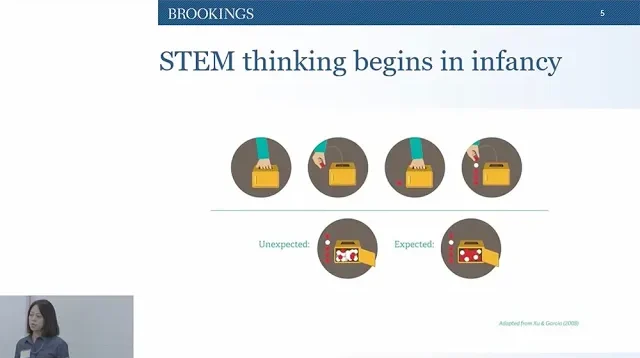Conscious Cities is the concept of built environments that are aware and responsive to our needs through data analysis, artificial intelligence, and the application of cognitive sciences in design. (https://theccd.org/)
A manifesto for Conscious Cities
Palti and Bar1 offer the vision of a city that is “conscious” in the sense of being aware of the motives, personalities and moods of its inhabitants. They note a study in geographical psychology2 showing that people with similar personality traits are more likely to be found in some regions than others, which the study’s authors see as supporting the person–environment hypothesis, namely that the match between people’s personality and neighborhood characteristics is important for people’s life satisfaction. Here we see like-minded people “voting with their feet” as to where to live and then shaping a neighborhood to meet their common needs. Nonetheless, Palti and Bar see these attempts at defining the parameters for more successful person-environment interactions, as providing the basis for designing a city sensitive to the pervading moods and personalities of people in different parts of the city at different times of day and night. They suggest that “in shared public spaces … we might identify dominant urges and goals to which the city can respond.”
Whereas “pyramids were built to inspire awe, monasteries to encourage contemplation,” a “conscious” city could “combine cutting-edge data, technology and planning techniques to address stable patterns of behaviour such as the flow of people to workplaces, while also reacting on a short-term basis to contexts such as a street concert or sports event, by temporarily adapting the streetscape.” Here are their examples:
1. Adjust the surroundings to reduce the chance of crowd trouble following a sporting event, reducing “deindividuation” by designing exits that quickly bring spectators into situations unrelated to the event.
2. Routes to a school could provide children with playful interventions that arouse curiosity – given fMRI data supporting the common-sense notion that stimulating curiosity can lead to more effective learning3.
3. A “conscious” street might prevent discomfort by sensing an overload of stimuli such as flashing ads or annoying sounds and damping the stimuli accordingly.
4. A classic study by Ulrich4 showed that a patient’s view of nature through the window of a hospital room may speed recovery and reduce the need for drugs when compared to recovery in a hospital room with a view of a brick wall.
Palti and Bar cite a related study5 which suggested that nature, “which is filled with intriguing stimuli, modestly grabs attention in a bottom-up fashion, allowing top-down directed-attention abilities a chance to replenish,” whereas urban environments are filled with distractions that make them less restorative. They ask “Could such an environment be recreated in a city, even one devoid of much real greenery?”
This last example suggests two immediate objections. One is that “nature” is not a very useful concept. Perhaps rural England is less natural than an Indian jungle where tigers roam, but many of us would find the former the more “restorative.” The other is that Parisian boulevards may engage the flâneur and prove restorative far more through the way that cafes, broad thoroughfares and well proportioned buildings frame the human parade than through the presence of trees – indisputable though it is that these may enhance a success or mask a failure of the streetscape. In any case, the integration of bottom-up and top-down directed-attention is at the heart of visual6, and indeed multi-sensory, understanding, and I am not clear in what sense “modest” bottom-up attention “replenishes” top-down directed-attention. Perhaps this just says that we may think better without distractions – but if we seek contemplation, what are we doing on a busy urban street? Perhaps the very distractions break us out of a blocked train of thought so that we can later return afresh to our mental challenges (an active variant of the strategy “I’ll sleep on it”).
Note, too, the emphasis on meeting the overall needs of a group of people. However, people have diverse needs and the resolution of the resultant conflicts may range from imposition of the will of the majority to a genuine attempt to satisfy all parties (which may yet be doomed to over-ride the interests of a few). In 2005, I was in Istanbul at the time of the final of the European Cup between Liverpool and Juventus, and my hotel was on a street that was closed for repairs. It thus became the place where Liverpool fans congregated outside bars and restaurants to enjoy this special event – and part of that enjoyment was to sing loud songs until the early hours of the morning. The result was that my wife and I could rarely get to sleep before 4 am. Exercise: Design a “conscious Istanbul” that could have made both the Liverpudlian football fans and the hotel guests content – taking into account the fact that many different streets might have been closed and each one prepared to “intelligently” meet diverse sets of human needs.
Or consider Example 3: If the street has many shops seeking to attract customers, would the shop keepers accept the turning down of their ads? And if the street is a major traffic artery, how could the street damp down the traffic noises? Perhaps the resolution for the latter would be both personal – wear noise reducing earphones – and political – encourage the transition to electric vehicles and greater use of public transport. In either case, politics and individual choice interact with urban design in diverse ways that the initial design process must consider (including an assessment of what types of responsiveness the city or street could exhibit).
However, my real concern is that the consciousness involved in these examples is that of the architect and urban planner. Palti & Bar advocate “designing surroundings with a heightened awareness towards the users of a space, and the activities taking place within.” Their examples seem to lean toward the reading of this as “the designer of urban surroundings must exhibit a heightened awareness towards the users of a space, and the activities taking place within,” rather than “the designer must design urban spaces which themselves [if surroundings can have selves] exhibit a heightened awareness towards the users of the space, and the activities taking place within.”
Example 1, for instance, seems to fit the former reading – the sort of rearrangement for a specific circumstance (the period during which the stadium empties) proposed there is already standard (consider, e.g., the switching of the direction of certain lanes of a road during peak hours). This seems quite different from addressing the general question: “What does a city need to respond to the unexpected?” It is in the latter sense that I have offered the notion of neuromorphic architecture7, in which a building would have a brain-like interaction infrastructure guiding its interactions with the environment inside it, while learning from neuroethology8, the study of neural mechanisms supporting the behavior of an animal interacting with the environment outside it.
Who/What is the City?
Let’s return to the suggestion1 that streets should be sensitive to our mental needs, and that a “conscious” city could “combine cutting-edge data, technology and planning techniques to address stable patterns of behaviour such as the flow of people to workplaces, while also reacting on a short-term basis to contexts such as a street concert or sports event, by temporarily adapting the streetscape.” This raises two (among many) immediate questions:
1. “What is the city?” Is it the physical structure of its buildings and the infrastructure of streets and rivers and parks as well as utilities for power, water, sewage and information – or is it the human-buildings-infrastructure symbiosis in which the city is defined by the dynamic interaction of all the above with the people within it, and their changing interactions to light and locale, to weather and to human interactions, the dynamic “atmospheres” afforded by the city9.
2. Who is the “we” or “us” in “our mental needs? Clearly, Palti and Bar mean “we humans,” yet we again enter the realm of politics – will the city be designed to satisfy the poor or homeless or only the wealthy and powerful? Will housing for workers maximize the well-being of the inhabitants or the profits of the developers?
Leaving the politics aside, I simply want to make the point that different groups of people will have their needs met at different times and different places, and that it is generally the case that wherever the needs of some humans are being met, other humans are working to meet those needs. The latter implies that the “interaction infrastructures” on the urban scale will in general bring human and artificial intelligences together to make decisions for both the short- and long-term scale.
In what follows, then, let’s note that humans will form part of the “cybernetic systems” that constitute the adaptive city; that different subsystems will meet different needs at different times; and that appropriate adaptability – whether or not it involves “consciousness” on the part of the city – will be a crucial part of urban design.
Cities with Consciousness
London was feeling quite pleased with itself. It felt it had done a fine job of responding to the Westminster massacre. Perhaps its peers would think it compared well to how Paris had responded to the Bataclan. But, thinking of Paris, it did feel a twinge of envy for the wide boulevards with their cafes. Sigh. And the Thames was all very well, but London could not help wondering what its life would have been like if it had had a harbour like Sydney’s.
I admire the consciousness of the tiger – but would fear it were we in the jungle with no fence between us.
The first italicized item offers a fanciful sample of the musings of a city that has awareness of itself in relation to others; the second reminds us that consciousness need not imply responsiveness to our needs.
Itai Palti10 cites the definition of conscious as “The quality or state of being aware, especially of something within ourself,” and asks if we could do the same for our cities. He notes the increasing use of technology to exchange data in cities, diverse records of human behavior and messages on social media, and asks “What if the city became aware of this information and began to make sense of what’s going on inside of itself?” Nonetheless, as in the “manifesto”1, he focuses more on the awareness of the designer than the possible emergence of cities with consciousness. What might the latter mean?
The first half of the above definition of conscious is useless – substituting “aware” for “conscious” tells us nothing – while the second half is wrong. The Latin “con + scio” implies “knowing together,” and we test that someone is conscious by checking that their awareness of our surroundings tallies with our own; conversely, we ascribe consciousness to the tiger for the attentiveness with which she stalks her prey. But is our aim to have cities that are aware of each other? And is there any reason a conscious city should care about individual people any more than we care about our individual cells? Ambrose Bierce11slyly defined an egotist “as a person of low taste, more interested in himself than in me,” and we want a city that whose primary concern is our well-being as its human inhabitants.
Let’s further analyze conscious cities as “built environments that are aware and responsive to our needs through data analysis, artificial intelligence, and the application of cognitive sciences in design.” There seems to be a division of responsibility here between the city being aware and responsive to our needs through data analysis [and] artificial intelligence and the application of cognitive sciences by humans in designing the city to be “aware and responsive.” This in turn seems to view the city as a non-human system with sensors, effectors, and a “nervous system” meeting human needs through data analysis and artificial intelligence – but I suggest we would do better to view the city as a symbiotic cybernetic urban system in which humans are not only needy creatures but also (i) an integral part of the “information infrastructure” that guides the city’s responsiveness and (ii) the essential part of the political system which determines which needs are to be met by the urban system (as distinct from individuals, families and larger “systems” outside the city’s purview).
An observation on human consciousness: There are relatively few effectors on whose state we can focus our attention; others proceed without our conscious intervention. We are not usually conscious of our breathing or our digestion but we can consciously control our breathing in exceptional circumstances, such as when under water too long. We are conscious of intentional actions (somewhat circular: an action is intentional if we are aware of our decision to execute it before we do so) – but only in a sketchy way, leaving the details of control of, e.g., muscle fibers to subconscious neural systems. We are also aware of hedonic states, such as the pleasure of basking in the sunshine. These are aspects we share with diverse creatures, what I would call “animal awareness.” I have argued12,13 that the transition to quintessentially human consciousness came as language emerged to coordinate the actions of two or more humans, but yielded a brain system that could not only actively affect ongoing decision-making but also provide a “running commentary” on circumstances that arose without our conscious decision. Merlin Donald14 stressed the crucial role of external memory systems both in expanding the memory capacity of individuals and in developing a shared memory that greatly augments what the individual could otherwise achieve. Our consciousness expands not only to our own memories but to the histories of distant places and lands and the generalities that can (often fallibly) be extracted therefrom. Computer systems extend that external memory from a passive to an active system that can generate new answers – placing ever greater emphasis on asking the right questions and assessing the algorithms and heuristics that generate the answers.
The complexity of human organizations rests on the coordination of diverse individuals, and that language mediates the sharing of the conscious impressions of these individuals. There is an exchange of ideas which may change enough minds to yield harmonious action, or yield opposing camps between which discord blocks achievement of the original goals. When there is convergence, we may say that “the group has decided,” talking as if the group is itself a conscious individual. Just as the human body has many organs of whose normal function we remain unaware, so we can study from a cybernetic perspective multiple levels of organization which extend from the cells and organs in our bodies to our selves to diverse groups – family, neighborhood, city, tribe, profession, social media networks, nation, world – in ways that may be hierarchical or heterarchical. (It might be time to reread the writings of Stafford Beer, including his stimulating but eccentric Platform for Change15)
With this, we can briefly consider the earlier question: “But is our aim to have cities that are aware of each other?” Where human awareness of each other is highly bandwidth limited – conversation, facial expression of emotion, relatively limited readings of others’ actions – there is no a priori limit on the bandwidth of data that can be transmitted between appropriate subsystems of one city to another’s. Perhaps of more interest than “awareness” is the notion that, not only could data be shared, but that analysis of such data in light of the decision-making employed in the generation of each data set could support the extraction of “best practices” in the form of flexible algorithms and practices adaptable to the needs in each city rather than imposing a one-size-fits-all on diverse urban systems.
The history of the city is in part a history of the development of systems which address specific problems more efficiently than uncoordinated human effort could manage. Ancient Rome saw the development of aqueducts and the Cloaca Maxima to bring water and remove sewage. Modern cities have been transformed by utilities for gas and electricity which not only simplify life in the home but also create systems to brighten the city at night in a way which may please many while distressing others. Traffic lights offer an illuminating example (interestingly, traffic lights are called “robots” in South African English). The first response was “Why should I wait at an empty intersection just because a light is red?” whereas now we accept them as a major factor in traffic safety on crowded streets – but here we may advocate better sensors and algorithms to “more intelligently” handle traffic flow under conditions that may vary on a minute-by-minute timescale.
In the approach to conscious cities offered here, the city stands at an intermediate position between individuals and neighborhoods on the one hand and states and countries on the other. In this framework, a city is an agglomeration of diverse subsystems, and for many of these systems, humans will be an integral component. I argue that cities are not themselves conscious entities in the way that humans are, but that they can be seen as purposive systems built atop diverse purposive subsystems – just as each human consciousness rides “atop” vast neural networks and other organs. We as humans may be aware of most of these systems, if at all, at only a gross level of detail at which we might debate their overall purpose – for example the tradeoff of cost and purity for the water & sewage system – while other humans will be embedded in the information infrastructure, some acting as mediators between political decisions and goal setting for these subsystems, others redesigning the subsystem and related subsystems in view of changes in both political decisions, demands of the city’s inhabitants, and emergent changes in infrastructure which may call forth explicit changes. When a subsystem is performing well, those outside the system may understand it at a high level which offers an apparently causal description of its operation whereas when it breaks down, only lower level analysis will suffice16, and this may indeed require intense efforts of human specialists working with “data analysis, artificial intelligence, and the application of cognitive sciences in design.” Not relegation of the city to control by one vast AI, but rather a sharing of control between humans and computers, with humans vital not only as problem-solvers but also as detectors of problems for humans of which the AI systems are not “aware” in the sense of formulating them as explicit targets for problem solving.
We started by recalling Palti and Bar’s1 vision of a city that is “conscious” in the sense of being able “to address stable patterns of behaviour such as the flow of people to workplaces, while also reacting on a short-term basis to contexts such as a street concert or sports event, by temporarily adapting the streetscape.” We have argued that a so-called “conscious city” will neither be aware in the way that humans are nor will its sensibility and responsiveness lie outside the realm of human involvement, and have stressed that people are an integral part of the dynamic system of systems that constitutes a city. The “consciousness” is that of humans, expressed in at least two different ways: (i) A crucial feature is the ability of the various subsystems is to be interpretable to the consciousness of the human experts that form part of the information infrastructure. (ii) A complementary feature is the availability to the general public of “high level” views of the subsystems with which they interact, with mechanisms available (whether in the short term, or on the longer time scale at which democratic politics operates) for updating the nature of their needs accordingly, whether through direct communication or indirectly through a variety of sensors that measure performance according to the currently set criteria.
Let’s not leave this essay, though, without noting that great architecture, and a fortiori great urban design, involves far more than functionality, even if that functionality is adaptive – let alone “conscious.” St. Peter’s is a masterpiece of its period, as is the Sydney Opera House in its time. The awe and contemplation of which Palti and Bar spoke are just part of the palette of human emotional and aesthetic responses that a great building or cityscape can evoke, and we must not lose sight of these as our new technologies develop. When Stewart Brand wrote “How Buildings Learn: What Happens After They’re Built”17, he was focusing on the way in which people adapt the structure of a building to changing purposes and aesthetics, and changes in the surroundings in the decades or even centuries after it is built. But each building he discusses has not learned from its own experience. It has no accumulation of wisdom, and when people renovate a building, they often come to it afresh in seeking to meet their current needs, rather than seeking to learn from, and build upon, the details of the building’s history. In a conscious city, we might imagine that buildings, alone or in concert, would truly learn over the long haul in a fashion which blends human experience – a sense of history as well as a palette of new skills – with brain-like adaptation in the information infrastructure (recall 7) – all this embedded in an architecture that provides a humanly pleasing initial design which supports dynamic reconfigurability of the underlying structures in the short term as well as on the time scale considered by Brand18.
References
- Palti, I. and M. Bar, A manifesto for conscious cities: should streets be sensitive to our mental needs? The Guardian, 2015: p. https://www.theguardian.com/cities/2015/aug/28/manifesto-conscious-cities-streets-sensitive-mental-needs
- Jokela, M., et al., Geographically varying associations between personality and life satisfaction in the London metropolitan area. Proceedings of the National Academy of Sciences, 2015. 112(3): p. 725-730.
- Gruber, M.J., B.D. Gelman, and C. Ranganath, States of curiosity modulate hippocampus-dependent learning via the dopaminergic circuit. Neuron, 2014. 84(2): p. 486-496.
- Ulrich, R., View through a window may influence recovery. Science, 1984. 224(4647): p. 224-225.
- Berman, M.G., J. Jonides, and S. Kaplan, The Cognitive Benefits of Interacting With Nature. Psychological Science, 2008. 19(12): p. 1207-1212.
- Hanson, A.R. and E.M. Riseman, VISIONS: a computer system for interpreting scenes, in Computer Vision Systems, A.R. Hanson and E.M. Riseman, Editors. 1978, Academic Press: New York. p. 129-163.
- Arbib, M.A., Brains, machines and buildings: towards a neuromorphic architecture. Intelligent Buildings International, 2012. 4(3): p. 147-168, DOI:10.1080/17508975.2012.702863.
- Ewert, J.-P., What is Neuroethology? 1980: Springer.
- Tidwell, P., ed. Architecture and Atmosphere: a Tapio Wirkkala – Rut Bryk Design Reader with contributions by Gernot Böhme, Tonino Griffero, Jean-Paul Thibaud and Juhani Pallasmaa. 2015, Tapio Wirkkala – Rut Bryk Foundation.: Espoo, Finland.
- Palti, I., An introduction to Conscious Cities. Conscious Cities: Architecture and Neuroscience. Anthology No.1, 2016 Conscious Cities conference, 2016: p. https://theccd.org/an-introduction-to-conscious-cities/.
- Bierce, A., The Devil’s Dictionary, in The Collected Works of Ambrose Bierce: Volume VII. 1909-1912, New York and Washington, DC: Neale Publishing.
- Arbib, M.A., Co-evolution of human consciousness and language, in Cajal and Consciousness: Scientific Approaches to Consciousness on the Centennial of Ramon y Cajal’s Textura. Ann N Y Acad Sci, 2001. 929: (P.C. Marijuan, ed.): p. 195-220.
- Arbib, M.A., How Language Evolution Reshaped Human Consciousness, in Biophysics of Consciousness: A Foundational Approach, R. Poznanski, Editor. 2016, World Scientific: Singapore. p. 87-128.
- Donald, M., Origins of the modern mind: Three stages in the evolution of culture and cognition. 1991, Cambridge, Massachusetts: Harvard University Press.
- Beer, S., Platform for Change 1975, London, New York: John Wiley & Sons.
- Arbib, M.A., Neurons, Schemas, Persons and Society—Revisited, in Brains Top Down: Is Top-Down Causation Challenging Neuroscience?, G. Auletta, I. Colagè, and M. Jeannerod, Editors. 2013, World Scientific: Singapore. p. 57-87.
- Brand, S., How Buildings Learn: What Happens After They’re Built. 1995: Penguin Books.
- Kolarevic, B. and V. Parlac, eds. Building Dynamics: Exploring Architecture of Change. 2015, Routledge: London and New York.
- Arbib, M.A., When Brains Design/Experience Buildings: Architectural Patterns for a Good Life, in Cultural Patterns and Neurocognitive Circuits, J.W. Vasbinder and B.Z. Gulyás, Editors. 2016, World Scientific Publishers: Singapore. p. 111-140.
- Arbib, M.A., Towards a Computational Comparative Neuroprimatology: Framing the Language-Ready Brain. Physics of Life Reviews, 2016. 16: p. 1-54.
- Arbib, M.A., How the Brain Got Language: The Mirror System Hypothesis. 2012, New York & Oxford: Oxford University Press.










